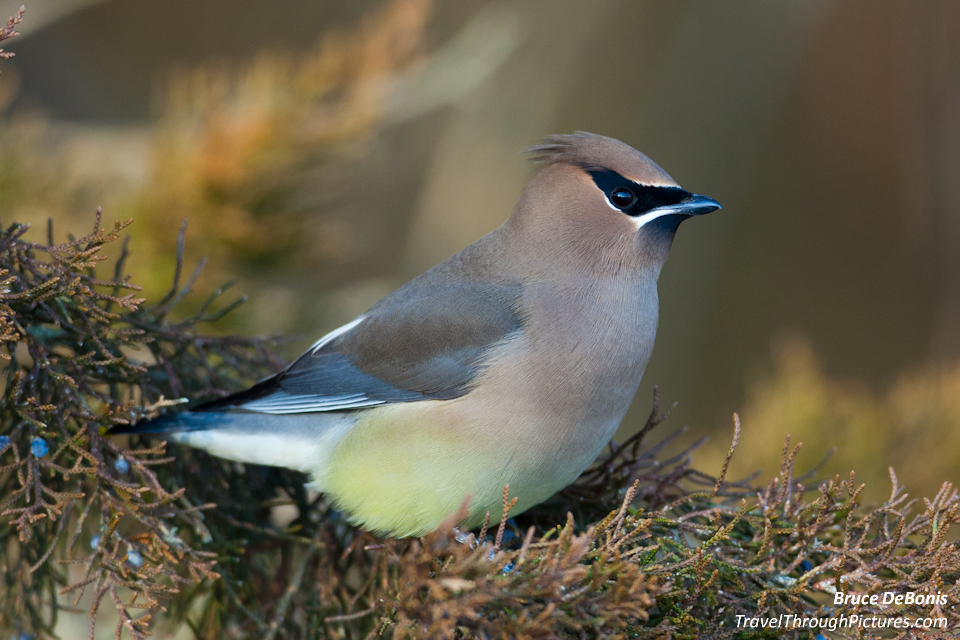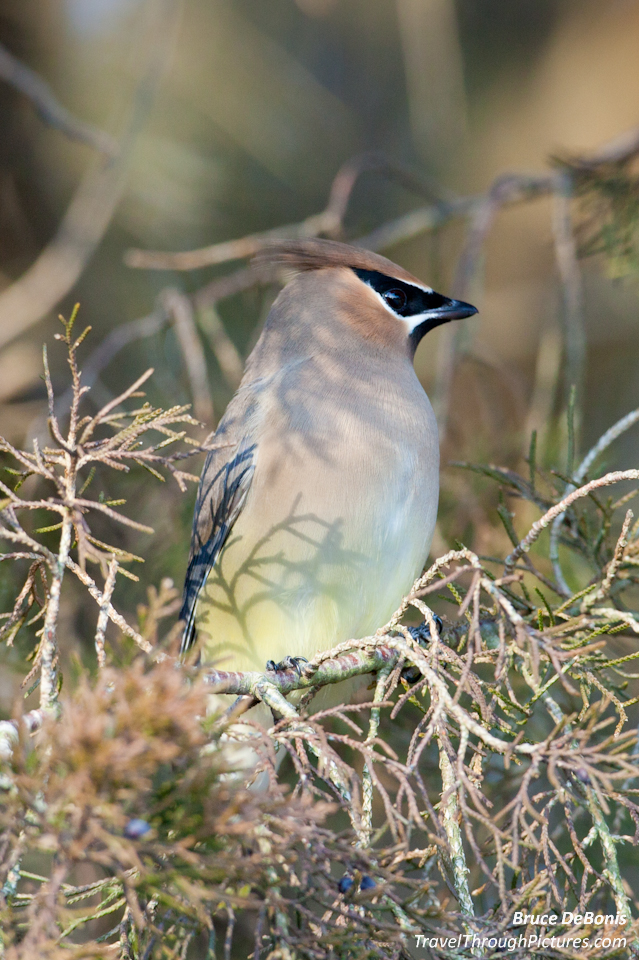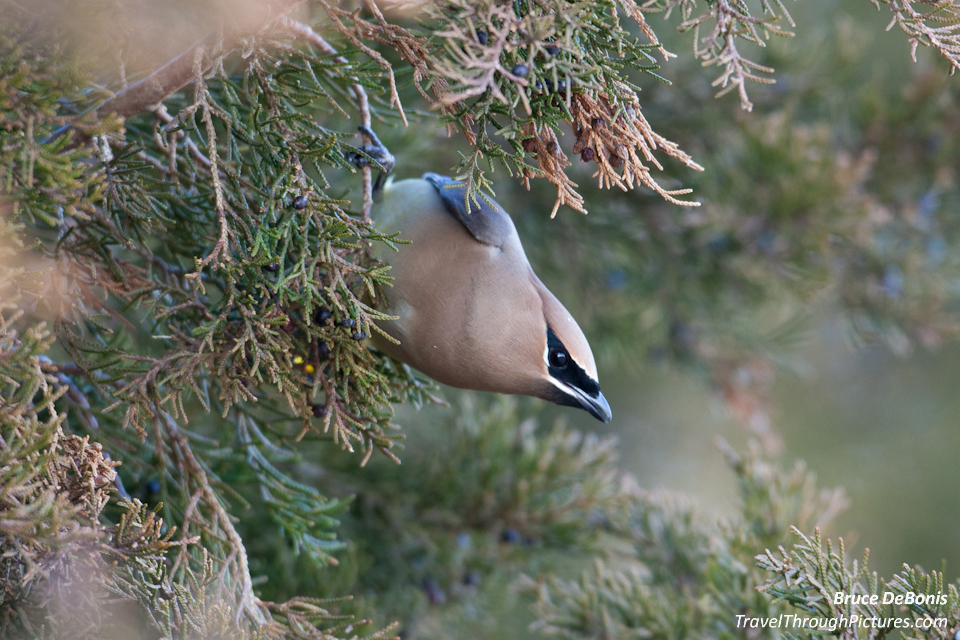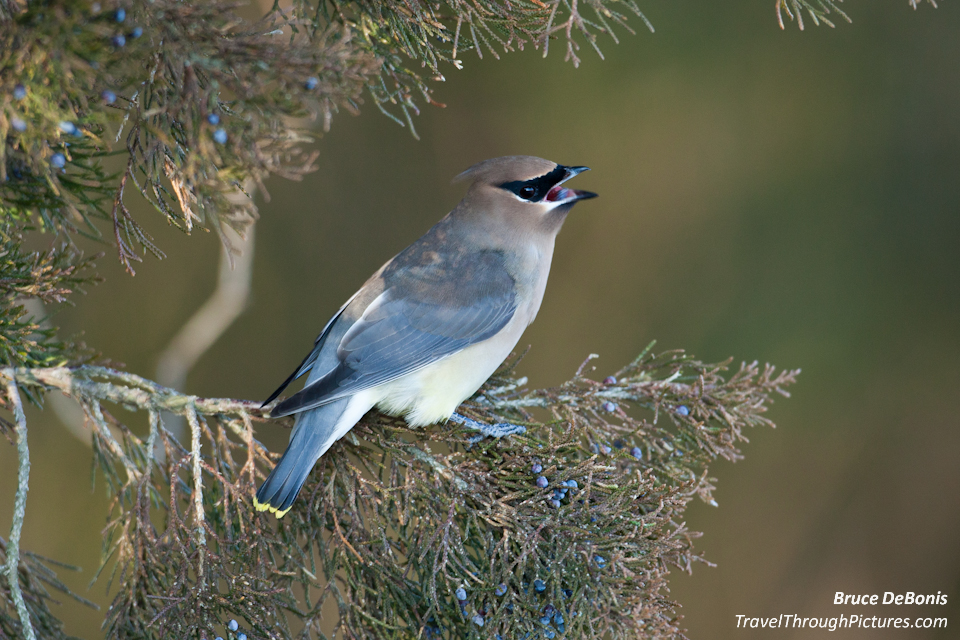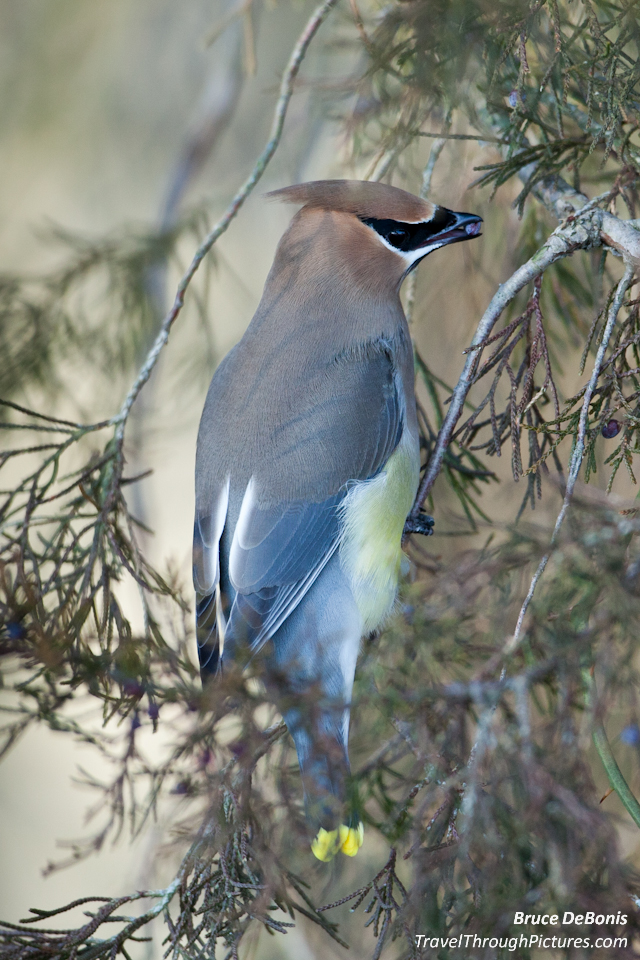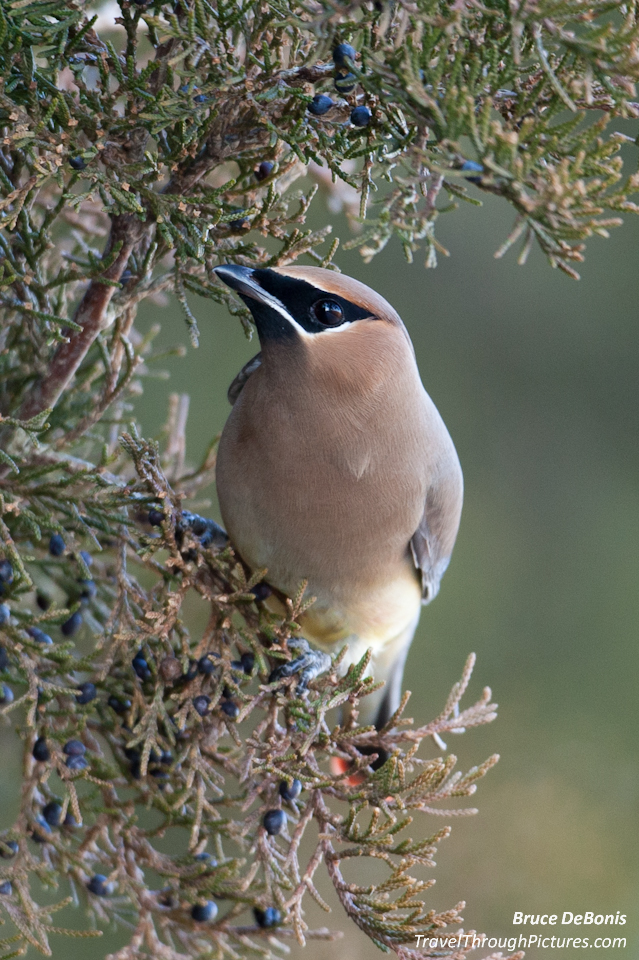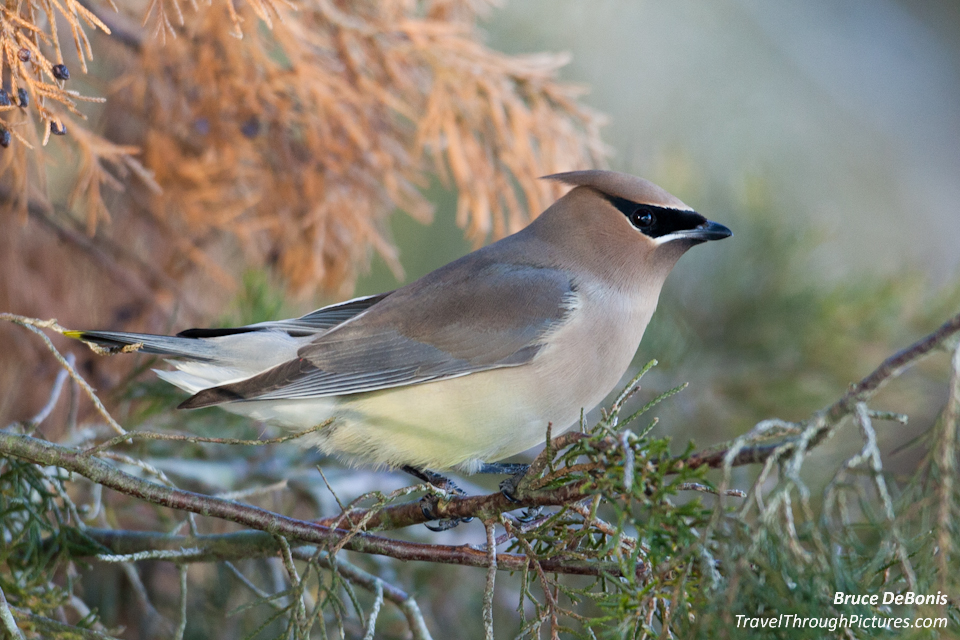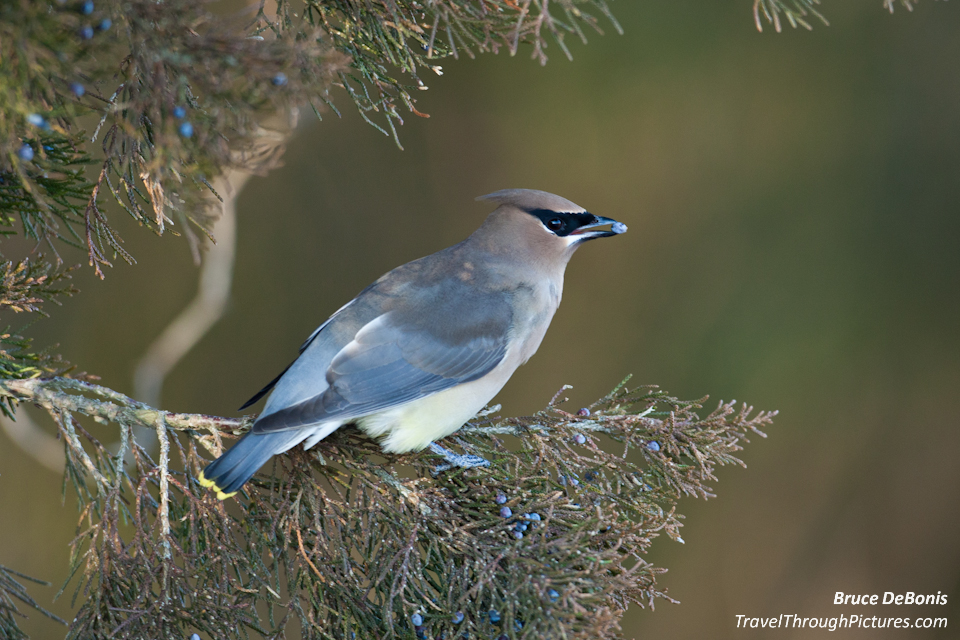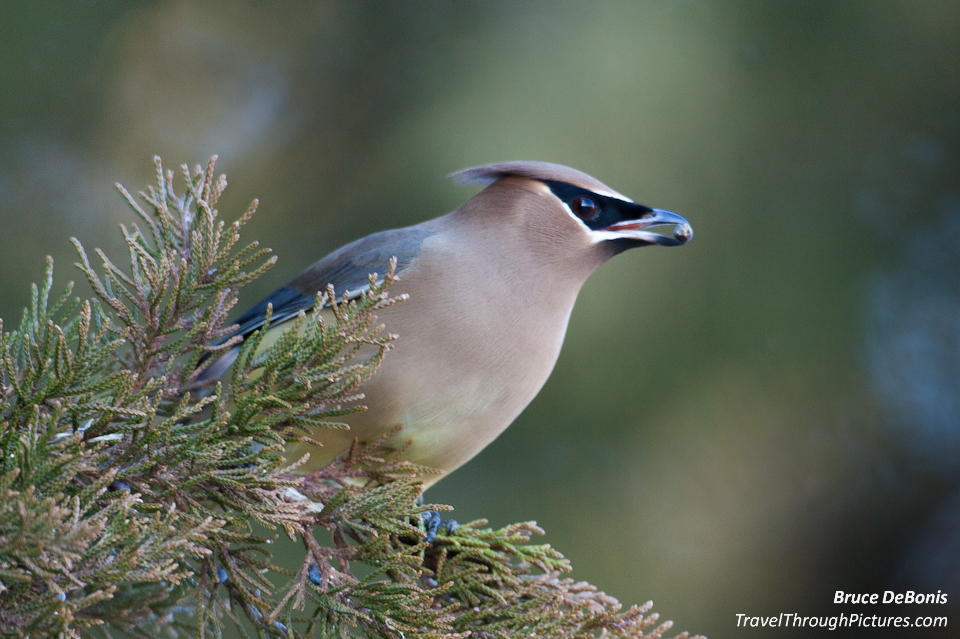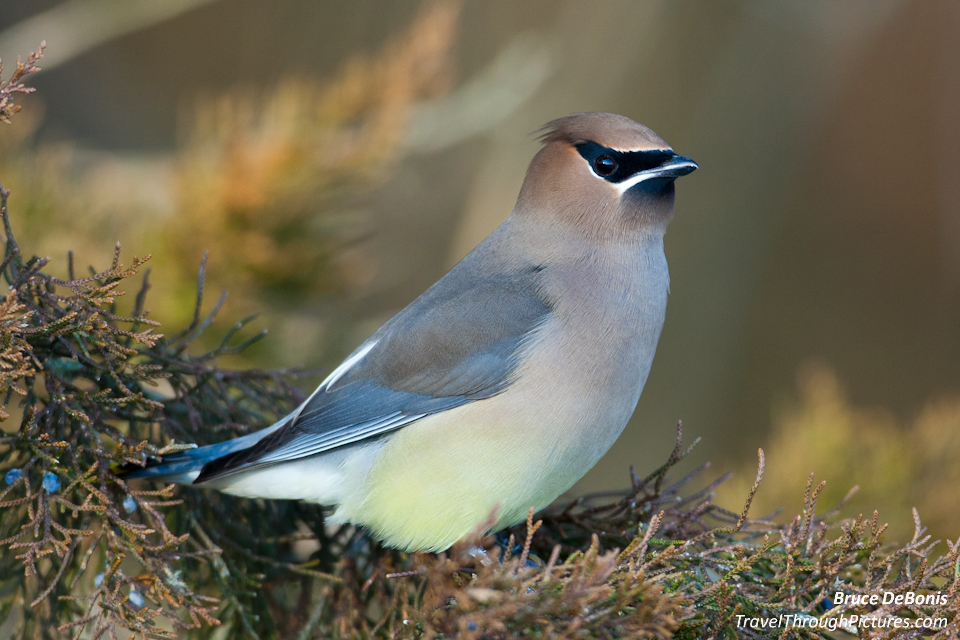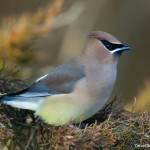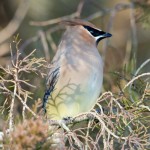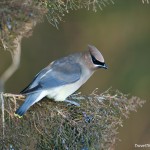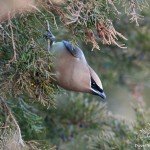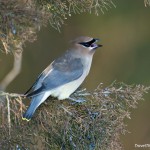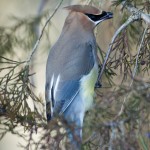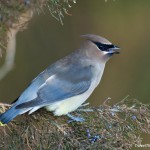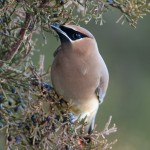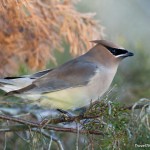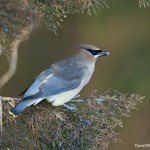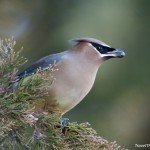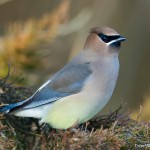The Role of Dumb Luck – Waxwings
Sometimes you just get lucky. I used to try and get lucky in the bars or at a party held by a friend but rarely did I have success. Even my trusted wingman Mr. Beer doesn’t improve my luck anymore. So where does one go for luck? Outside! Get out there. Luck with photography doesn’t happen when you are clicking away on your computer at home or guzzling ‘em down at a bar, you have to pick up your camera and go.
The Cedar Waxwings you see here were the result of just dumb luck. I didn’t go out with the objective of taking pictures of Waxwings, it just happened that way. I didn’t even know what a Waxwing was. For me, luck plays a big role in getting cool pictures and luck is a numbers game. The more times you head out with your camera, the more you will find luck.
From looking back on my portfolio of pictures, I saw some patterns to getting good photographs and these included frequency and preparedness. Frequency is simply just getting out there as much as you can. Preparedness is about planning ahead and bringing along the right equipment and that equipment may not include just camera gear but simple things like gloves, a hat, and binoculars. I snapped these Waxwings on a cold January afternoon and without the right gear, I could never have stayed outside long enough to get these pictures.
Trust the Birder Brains
I scan the internet for places to go where the birds are. Local ornithological club web sites are good places to learn about local birding areas and all state and federal wildlife reserves have websites now that publish descriptions of bird activity. Once, after having the courage of a few beers in me, I signed up for a bird-walk with a local birding club and I am really glad I did. Not only did I learn of a great place to go for bird and other types of photography, I met some really knowledgeable Birder Brains. Birder Brains are great people and are a wealth of knowledge for tips on birding locations. They also know when and when not to go so you don’t waste time.
When I do head out to these places, I make it a point to chat it up with a Birder Brain or two as they know what is going there. You can always recognize a Birder Brain, as they tend to stand all by themselves while staring through binoculars into some scrubby, ratty bush. One day while out in the pinelands of New Jersey, a Birder Brain I met there told me there was a line of Cedar trees loaded with Waxwings and Warblers about 200 yards from where we were standing. I never would have found these things without the help of a Birder Brain.
Work Fast!
I hauled my Canon 5D MKII with the killer Canon 500mm f/4 IS and Wimberly head / Gitzo tripod combo down to the tree line where I found more of these little creatures than I could ever have imagined. From habit, I worked fast and immediately sized up the sun and its relationship to the trees. I was losing the light fast and the shadows from surrounding trees were encroaching on the birds fluttering about the cedars. I positioned myself with the sun just over my shoulder, moved slowly towards the tree, planted my rig, and started snapping away. I was amazed at how fast they were stripping this cedar tree of its little blue berries. I only got in about 10 minutes of shooting when all of a sudden the flock of thirty or so birds just exploded out of the tree taking off never to return. Boy, did I just have some great dumb luck.
How I Configured My Camera
I have my camera pre-configured for shooting birds on Canon’s preset number C3. I spin the camera knob to C3 where I have set my ISO set at 400, aperture at f/5.6, RAW only, partial metering, and Aperture Priority Mode. I found this to be the best “center” point for taking most of my bird pictures. At a minimum, it provides a common reference point from which I adjust based on conditions. As it turned out, these settings were about right because there just was not much light and the camera set the shutter speeds to around 1/160. For fidgety birds, 1/160 is not fast enough to freeze their movement and when I pulled up my catch for the day on my home computer, I sadly found many many blurred pics where their heads were fuzzed up from moving. Thinking back on it, I should have bumped my ISO to 800 which would have sped up the shutter and therefore improve my keeper rate.
The reason I start out at ISO 400 is that I find that my Canon 5D MKII really starts to degrade at higher ISOs. My findings on this matter are a bit contrary to other photographers who find this camera to be really good at higher ISOs but this is just not my experience. Actually, I like to shoot at ISO 200 or even ISO 100 if I have enough light as this is where I think the pictures look so much more…well… not sure how to describe the difference but they just look better. Everyone talks about how sensor noise increases as you increase ISO, true of course, but I think something else happens to degrade realism but I just can’t put what I am seeing into words. Maybe my post processing skills are poor or maybe it’s because I am not getting perfect exposures when I shoot, or maybe it’s because these birds are small and I crop heavily but I just don’t like shooting at higher ISOs unless I have to.
The Equipment:
- Canon 5D Mk II
- Canon 500mm IS f/4
- Canon 1.4x teleconverter
- Gitzo tripod with Wimberly head

